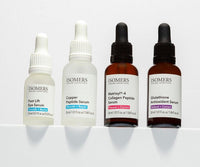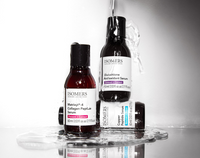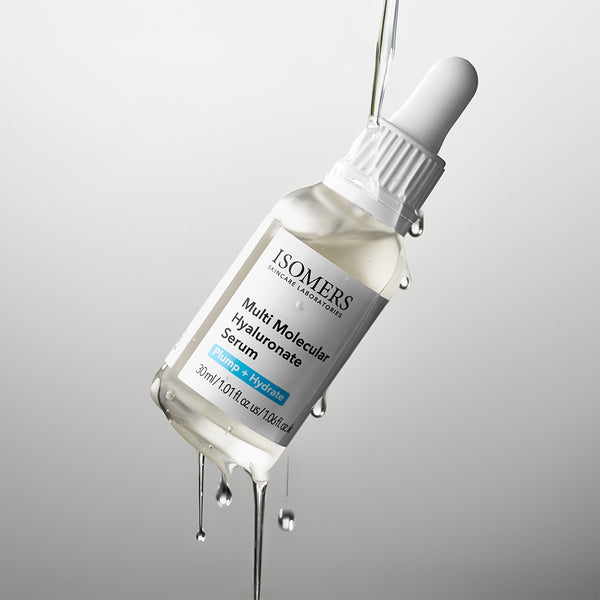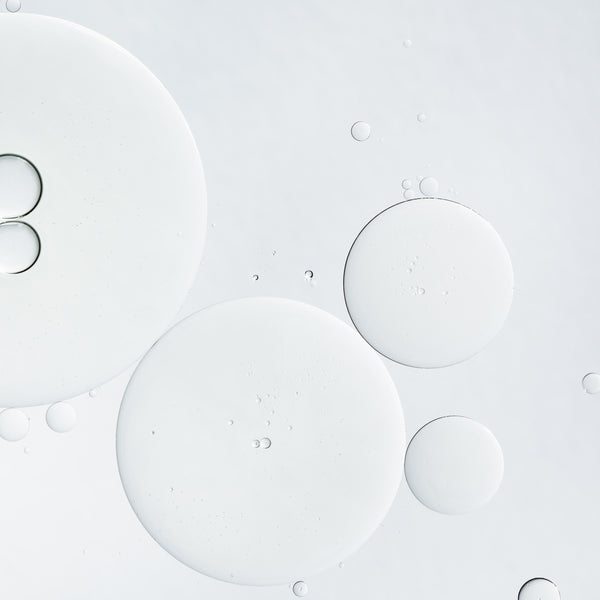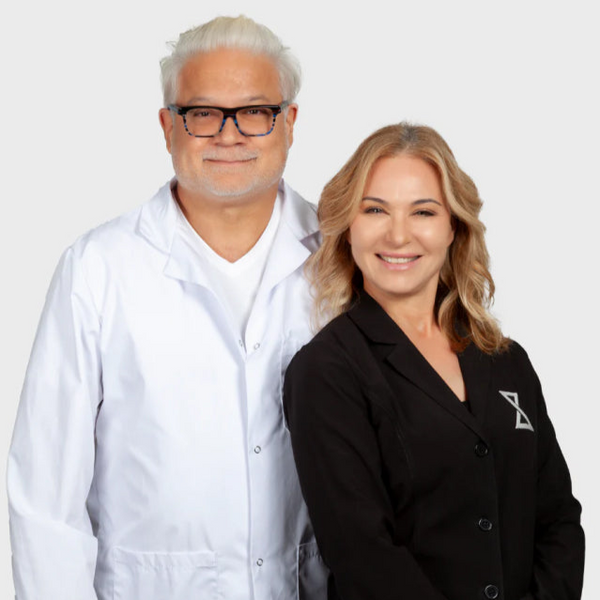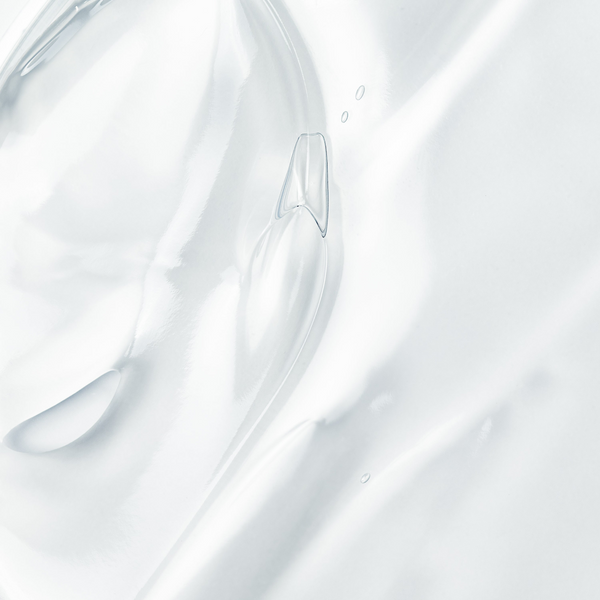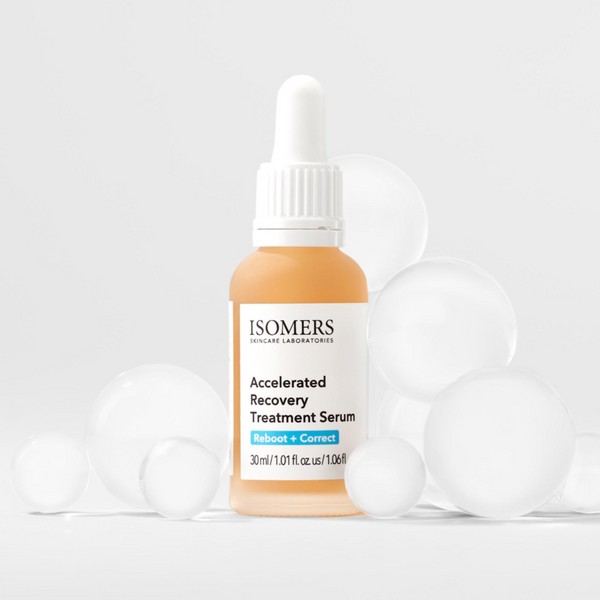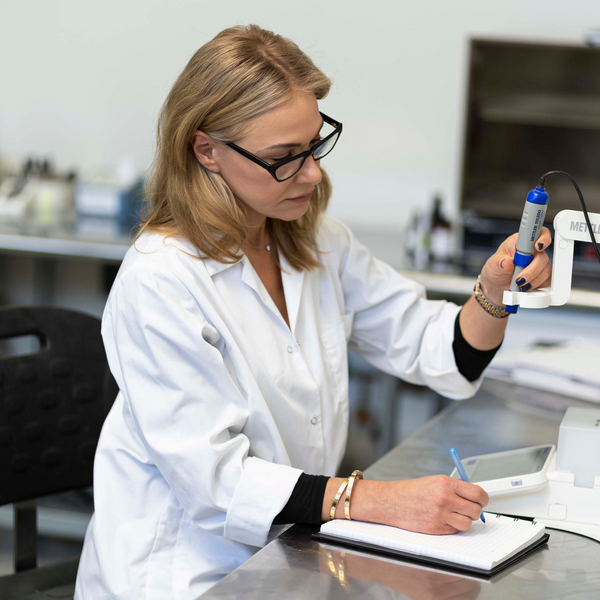BHAs and AHAs are widely used in the skincare world to address a variety of skin concerns. Their ability to promote skin cell turnover can help individuals achieve smoother, even-toned skin after continuous application in their skincare routine.
But what are the differences between beta-hydroxy acids and alpha-hydroxy acids? Below, we’ll examine what separates these powerful skincare ingredients, their benefits to the skin, dos and don’ts, and where to find hydroxy-acid-based products like our salicylic acid serum from Isomers Skincare.
What Are Hydroxy Acids?
Before we can examine the differences between AHAs and BHAs, what is a hydroxy acid in the first place?
Hydroxy acids are naturally occurring chemicals with exfoliant properties. Both BHAs and AHAs can be used in skincare applications to exfoliate the skin, but they each have slightly different properties that allow them to target various skin concerns.
Due to their potency, skincare products containing BHAs and AHAs are generally formulated in microdoses (around 0.1% to 0.3% per dose) to prevent irritation, redness, and other adverse reactions.
When applied in safe, small doses, BHAs and AHAs can help individuals target issues like acne, fine lines and wrinkles, large pores, uneven skin tone, skin texture, and more.
What Is the Difference Between These Two Hydroxy Acids?
So, what is the difference between alpha-hydroxy acids and beta-hydroxy acids, and how can you apply them to your skincare routine? Let’s break this down below.
How BHAs Work in the Skin
BHAs (beta-hydroxy acids) are naturally sourced from plants like willow or wintergreen bark, but are generally created synthetically for skincare products and cosmetic applications.
In skincare, “beta-hydroxy acids” generally refer to salicylic acid, a common ingredient for targeting acne and enlarged pores (you can find salicylic acid serum for these skin concerns in our Shop).
BHAs are oil-soluble chemical exfoliants, which allow them to penetrate deep into the pores to remove excess oil, sebum, and dead skin cells. Generally, you will never use higher than a 2% dose of salicylic acid, as your skin never gets used to this specific acid.
How AHAs Work in the Skin
AHAs (alpha-hydroxy acids) are also sourced from nature and commonly found in sugary fruits, milk, and sugarcane. However, like BHAs, they are derived synthetically for skincare purposes. Glycolic and lactic acids are the most common AHAs for skincare. Lactic acid also works as a moisturizer and an exfoliator.
Unlike BHAs, which are oil-soluble, AHAs are water-soluble, meaning they dissolve in water. When applied to the skin, AHAs remove the top, outermost layer of dead skin cells, leaving space for new skin cells to generate in their place.
How to Add BHAs and AHAs to Your Skincare Routine
So, what is the key differentiator between AHAs and BHAs? How deeply they work into the skin.
AHAs are water-soluble, which means they work on the skin's surface (attached to the water-logging properties of your skin) to remove the top layers of dead cells.
BHAs, on the other hand, are oil-soluble, allowing them to work on the surface while also penetrating deeper to remove congested, excess oil in the pores.
AHAs and BHAs are powerful, potent ingredients that, when used incorrectly, can cause adverse reactions on your skin. So, before purchasing these hydroxy acids for your skincare routine, remember the following points:
- When used separately, AHAs are suited for dry or aged skin, while BHAs are good for normal or oily skin. Combination skin types can use both of these ingredients effectively.
-
Everyone’s skin is different and responds to exfoliating agents differently. Before deciding to integrate AHAs or BHAs into your routine, test a spot on your skin with the ingredient and wait 24 hours. If you don’t experience any adverse effects, continue gradually adding this step into your routine. -
Contrary to popular belief, you can mix these two acids together. Don't use very high concentrations when pairing AHAs and BHAs in the same skincare routine. Remember: the more acidic the pH, the more aggressively the acid will behave on your skin. Slowly integrate these ingredients into your routine and apply every other day to every third day.
Get AHA and BHA-Enriched Products from Isomers Skincare
AHAs and BHAs are excellent ingredients that can help return your skin to an even tone and smooth texture, free from congested pores and dead skin cells.
Our 2% Salicylic Acid BHA Exfoliating Serum is a great product to incorporate BHAs into your routine. This salicylic acid serum is formulated to target unclogged pores, dissolve excess oil, and remove impurities from your complexion. With consistent application, you can begin to see a more even skin tone and texture, and a reduced appearance of enlarged pores.
If you’d like to add these ingredients to your skincare routine, take our Build My Routine quiz to learn if they’re the right fit for your skin type, concerns, and goals.
